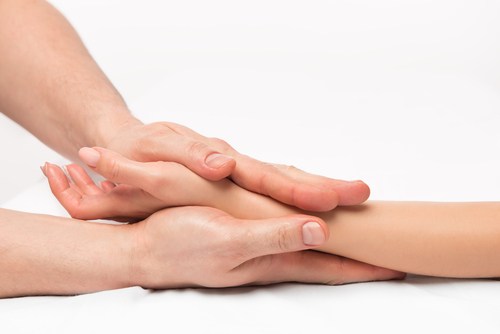Breast Cancer Recovery:
The Role of Massage Therapy in Helping to Deal with Pain and Improve Mobility

Breast Cancer Recovery:
The Role of Massage Therapy in Helping to Deal with Pain and Improve Mobility.
A cancer diagnosis can encompass physical and emotional challenges and these challenges can persist long after treatment has finished.
In my role as a movement and manual therapist I often see clients being treated for breast cancer. The common things these ladies seek my help with are pain, stiffness, a lack of mobility, auxiliary web syndrome, where rope like bands form under the arm causing more restriction and pain and lymphedema.
Physical therapy plays a vital role in recovery, holistic complimentary or integrated therapies like massage are safe and there are evidence based treatments that can enhance recovery and improve your sense of well-being.
Here I want to explain how touch therapies can support you through your treatment and beyond. We will look at different types of massage therapy and also take a look at safety considerations for this population.
Did You Know that there are different types of massage therapy?
Massage should never be a one-size fits all approach, and cancer patients will need further adjustments. I am trained in mysofascial release, oncology massage, manual lymphatic drainage and as an oncology scar specialist and can customise a treatment for your unique needs.
Manual Lymphatic Drainage (MLD) – MLD is a gentle, rhythmic technique designed to encourage lymph flow and reduce fluid build up. Light strokes and pumping motions are used to help redirect fluid away from swollen areas to reduce swelling and relieve discomfort.
Scar Therapy/Myofascial Release – Many people develop scar tissue after surgery and radiation, this can cause pain, itching, tightness and limit the mobility. Shoulder pain and restriction are quite common in the years after breast surgery and radiotherapy and pain and dysfunction from scars in areas where tissue was taken for reconstruction is also common. Axillary web syndrome is also something I see regularly in clinic. I need to adapt the techniques to each client, the age of the scar and any other treatment they are receiving. I will use pumping, rolling, rubbing, lifting and shearing techniques. Pressure and stretch are adapted for your unique issues. This kind of treatment can soften the area and improve the look of the scar and any range of movement restrictions.
Women’s Balance or Swedish Massage – The emotional toll of cancer can lead to stress, anxiety and poor sleep. Swedish massage is gentle and relaxing to help soothe the nervous system. The endorphins released are the body’s natural pain killers. This massage will help promote a deep sense of calm and relaxation and improve sleep.
Research Evidence supporting Massage Therapy
(Cole et al 2024) – Massage therapy is effective as a non-pharmacological tool in decreasing post-surgical pain and anxiety in women with breast cancer.
(Munoz-Fernandez et al 2021) – Myofascial techniques improved pain, mobility and functionality related to breast scar adhesions when applied from 4 months to 3years after surgery.
In Summary
Massage therapy is safe and can compliment conventional care and support your recovery. I have undertaken specialist additional oncology massage training to understand the complexities of cancer and treatment. The treatment will be customised for you. The pressure and timing will differ from a general massage treatment. Your body needs some specific care and TLC.
Open communication between your medical team, you and myself is essential, to make sure my treatment plan compliments your medical care.
Navigating a breast cancer diagnosis and treatment involves more than just physical healing- restoring your well-being by reducing pain and improving your mobility alongside improving sleep and any emotional stress, is where massage therapy can help.
Please get in touch to begin your journey towards healing and wellness.
Find out more by reading What is Oncology Scar Therapy and What Will Happen During A Treatment
